 September 28, 2017 John E. Ross, KD8IDJ, Editor
| |||||||||||
Advisory: Requests for Information from the Public and the Press Many individuals have loved ones in Puerto Rico, and they are understandably hopeful that Amateur Radio operators can relay messages to them. As a result, some are contacting amateurs with requests to pass message traffic to the island.
For inquiries from the public, ARRL advises that these individuals be informed that amateurs traveling to Puerto Rico to support the American Red Cross effort will be tasked with handling outbound traffic only. Members of the public concerned about family and friends in Puerto Rico should access the American Red Cross Safe and Well Website. Status information from friends and relatives in Puerto Rico will be entered into the system as it arrives from amateurs stationed there. For media inquiries, please ask reporters to contact ARRL directly. A system has been established at ARRL Headquarters to respond to media inquiries in a timely and accurate manner. "Force of 50" Steps Up to Assist Hurricane-Ravaged Puerto Rico Members of the Amateur Radio community have volunteered to assist in the ongoing recovery from Hurricane Maria, which devastated Puerto Rico and Dominica and, to a lesser extent, the US Virgin Islands. This week, 50 of the most accomplished US radio amateurs responded within 24 hours to a call from the American Red Cross (ARC) to deploy to Puerto Rico and provide emergency communications assistance there. At the ARC's request, ARRL rallied the US Amateur Radio community to provide up to 25 two-person teams of highly qualified hams. ARRL CEO Tom Gallagher, NY2RF, said that more than 350 answered the call, from nearly every state. "This generous outpouring of response represents the finest qualities of the Amateur Radio community," he said. "These individuals are dropping whatever they are doing now, heading off to an extended hardship-duty assignment, and offering their special talents to Americans who have been cut off from their families, living amid widespread destruction and without electrical power since Hurricane Maria struck the Caribbean region last week." The group's principal mission will be to move health-and-welfare information from the island back to the US mainland, where that data will be entered in the Red Cross Safe and Well system. The Salvation Army Team Emergency Radio Network (SATERN) has been asked to assist these operators when they check in with tactical, health-and-welfare (H&W), and Safe and Well messages. SATERN and other active nets are not accepting incoming H&W inquiries. The Caribbean Emergency and Weather Net (CEWN) is taking incoming H&W inquiries via e-mail for Dominica. The Puerto Rico Federal Affairs Administration (PRFAA) is taking inquiries (only one per sender) via e-mail for Puerto Rico. Inquiries should include the full name and location of both the sender and the individual(s) being sought and the sender's e-mail address.
The group will be in Puerto Rico for up to 3 weeks. ARRL has equipped each team with an HF transceiver, software, a dipole antenna, a power supply and all connecting cables, fitted in a rugged waterproof container. In an unprecedented and crucial move, the Federal Emergency Management Agency (FEMA) agreed to help get the Ham Aid gear to Puerto Rico. The League also is sending two VHF repeaters, a dozen hand-held transceivers, five mobile radios, what Gallagher described as "5 cubic feet of batteries," a number of small 2-kW portable generators, and solar-powered battery chargers. The hams and their equipment will be sent to Red Cross shelters extending from San Juan to the western end of the island. In addition, ARRL has committed to purchasing up to $50,000 worth of new Ham Aid gear for this and for future emergencies.
ARRL's Emergency Preparedness Manager Mike Corey, KI1U, said this was the first time in the nearly 75-year relationship between ARRL and the ARC that such a request for assistance had been made. "Hurricane Maria has devastated the island's communications infrastructure," Corey said. "Without electricity and telephone, and with most of the cell sites out of service, millions of Americans are cut off from communicating. Shelters are unable to reach local emergency services. And, people cannot check on the welfare of their loved ones. The situation is dire." The Yasme Foundation announced this week that it has made a grant to ARRL's Ham Aid fund, in support of the Amateur Radio response to the recent hurricanes in the US and Caribbean. The Ham Aid fund was created in 2005 in response to the need for equipment and resources to support the Amateur Radio response to hurricanes Katrina, Rita, and Wilma. A September 27 CNN report documented the personal impact of the storm on Puerto Rico and Amateur Radio's role in the recovery. How You Can Help ARRL President Rick Roderick, K5UR, has asked for contributions to ARRL's Ham Aid fund. "Equipment has been flying out the door since Hurricane Harvey struck the US mainland," he emphasized. "From meeting requirements in aid of Hurricane Irma victims in the US Virgin Islands and Florida, our store of Ham Aid kits has been depleted."
ARRL has previously staged Ham Aid equipment in Texas as well as supplied kits to Florida, the US Virgin Islands, and Puerto Rico. With the Ham Aid inventory depleted, donations are needed now. Contributions to Ham Aid are 100% tax deductible. To donate online, select "Ham Aid" from the ARRL donation form. To donate by mail, print a donation form, and mail it with your check payable to ARRL, noting "Ham Aid" on the memo line of your check. Mail to ARRL, 225 Main St., Newington, CT 06111 USA. Amateur Radio Volunteers Filling Communication Gap in the Caribbean Puerto Rico and the US Virgin Islands both suffered substantial damage from Hurricane Maria, although Puerto Rico took the bigger hit, and it is there that Amateur Radio has been filling a huge telecommunications gap. The FCC said at mid-week that 91% of cell telephone sites were still out in Puerto Rico. In the US Virgin Islands, the figure is about 60%.
"The situation in Puerto Rico is very devastating across all the island," Puerto Rico SM Oscar Resto, KP4RF, said over the weekend. "Communications via land phone or mobiles are almost nil." Repeaters are down, he said, and hams have been using the 2-meter simplex frequency of 146.52 MHz, although he hoped to see some repeaters come back on line (the 448.225 repeater in Bayamon has been online, handling health-and-welfare traffic). With police repeaters also down, law enforcement has been using 2 meters as well. American Red Cross Headquarters suffered the loss of its emergency generator due to flooding. A temporary ARC headquarters has internet and cell service, he said.
Resto said radio amateurs have also been assisting Puerto Rico's Electric Power Authority (Autoridad de Energía Eléctrica) using 146.52 MHz to dispatch line crews and coordinate fuel deliveries for the authority's offices at the Monacillo Control Center and at several power plants. "The power system is fully shut down for all the island," he said. Drinking water and proper sanitation facilities are also in very short supply. Resto said Puerto Rico needs "everything...solar panels, repeaters, and most important, transmission lines and antennas. Some base or mobile VHF/UHF radios, a 1- to 2-kW power generator." Fuel for generators as well as vehicles is still in short supply on Puerto Rico. Radio amateurs in Puerto Rico have been operating brisk and busy ad hoc health-and-welfare traffic nets on 7.175 and 14.270 MHz, as has the Salvation Army Team Emergency Network (SATERN) on 14.265 MHz. Gerry Hull, W1VE, reported that the net on 14.270 MHz has handled thousands of messages in the past week. Hull has also been active on the SATERN net. Today will mark Day 11 of the Hurricane Maria activation for SATERN, surpassing the 8-day SATERN operation for Hurricane Irma and making it the longest activation since Hurricane Katrina in 2005. "Calls to family are very emotional," he told ARRL. "I am getting all kinds of calls day and night for people desperate to hear about family in Puerto Rico, but hams cannot provide inbound traffic." He directs them to the Red Cross website. "Lots of contesters are helping with their big stations," he said.
US Virgin Islands Section Manager Fred Kleber, K9VV, said the USVI are in much better shape than Puerto Rico. "They really got slammed hard," he said. Kleber said he still has antennas that were not destroyed by the storm and that he can hit Puerto Rico on 2 meters from his location. He also plans to deploy some 20 mesh wireless network nodes to provide connectivity between key USVI government locations. "We have used every trick in our comms bag of tricks to make stuff work," he said. Kleber said pictures in the news and social media don't do justice to the wholesale devastation in parts of the Caribbean. In the USVI, he said, trees, power poles, transformers, and telephone lines were downed all over, and debris blocking roadways is making travel slow or altogther impossible. He and others have been staffing the emergency communications center 24/7. The Caribbean Emergency and Weather Net (CEWN) on 7.188 and 3.815 MHz has focused its attention on the situation on Dominica. "Truly I think that the regional agencies were not ready for a calamity of this magnitude," Kumar Persaud, J85K, one of the CEWN net controllers said last weekend. "The CEWN operators have ended up filling the communications gap for the agencies, without any prior briefing."
The net has been dealing with a tremendous volume of traffic for Dominica and Puerto Rico, with a handful of stations handling emergency and priority communications for a million or more people. ARRL Santa Barbara Section Technical Advisor Ben Kuo, AI6YR -- who has been keeping a close ear on the situation in the Caribbean -- said hams on St. Lucia and Dominica and from outside the region coordinated the landing of emergency relief vessels from Barbuda and advised rescue groups on logistics. Amateur Radio also has provided a path for government communication on Dominica, where conditions are starting to improve. There's more information on the Amateur Radio response on the Hurricane Maria-Dominica Amateur Radio Communications (DARCI) Facebook page. National Public Radio (NPR) highlighted the role of Amateur Radio in the Dominica response in a September 21 story. Amateur Radio Reports: Arecibo Observatory Dish Sustained Serious Damage from Maria Articles on the National Geographic and Space.com websites last weekend cited Amateur Radio reports that Puerto Rico's Arecibo Observatory came through Hurricane Maria largely intact but "with some significant damage." Universities Space Research Association (USRA), which helps to operate the Observatory, said it learned via "short wave radio contact" that staff and family members sheltering at Arecibo are safe.
"The major structures, including the 300-meter telescope, are intact, though suffered some damage when the atmospheric radar line feed broke off, and falling debris from it punctured the dish in several places," USRA reported on its website. "Also, a separate 12-meter dish used as a phase reference for Very Long Baseline Interferometry was lost." Observatory officials are still assessing the damage, but Jim Breakall, WA3FET, of Penn State University, told ARRL that the 96-foot line feed antenna at 430 MHz is "historically the key piece to the observatory." It's also the antenna that he and others have used for Amateur Radio moonbounce activities from Arecibo. The Observatory is home to KP4AO. "To hear that this 10,000-pound key piece to the Observatory fell and hit the 1,000-meter dish is just a huge shock," Breakall said last Saturday. "This antenna was connected to the 2.5 million W 430-MHz radar transmitter that was a key to ionospheric experiments. It is a great loss for sure." Angel Vazquez, WP3R, who manages radio telescope operations at the Observatory, was one of the only radio amateurs able to pass along any information; among those he contacted was Princeton University professor and Nobel Laureate Joe Taylor, K1JT. Vazquez was using a generator that, Breakall told ARRL, was not working very well. "Many others have heard about all of this and have come to help relay messages to loved ones and friends to let people know they are okay," Breakall added.
Breakall said he's less concerned to learn that his own Amateur Radio contest station, on a hill not far from the Observatory, was destroyed by Hurricane Maria. "While this is sad for me and others, my concern is with the safety and health of many friends and the people of Puerto Rico in General," he said. This is my second home, and many of the people there I treat as my brothers and sisters." USRA reported last weekend that the access road to the Observatory was covered with debris and impassable. Breakall told ARRL that he's worried about what might happen in the weeks and months ahead. "I just hope that desperation does not set in, and things get out of hand there," he said. "It is going to be very tough." The Doctor Will See You Now! "Soldering and Unsoldering" is the topic of the latest episode of the "ARRL The Doctor is In" podcast. Listen...and learn! Sponsored by DX Engineering, "ARRL The Doctor is In" is an informative discussion of all things technical. Listen on your computer, tablet, or smartphone -- whenever and wherever you like!
Enjoy "ARRL The Doctor is In" on Apple iTunes, or by using your iPhone or iPad podcast app (just search for "ARRL The Doctor is In"). You can also listen online at Blubrry, or at Stitcher (free registration required, or browse the site as a guest) and through the free Stitcher app for iOS, Kindle, or Android devices. If you've never listened to a podcast before, download our beginner's guide. Round-the-World Flyer Brian Lloyd, WB6RQN, Spearheading Dominica Airlift Brian Lloyd, WB6RQN, the Texas aviator who recently circumnavigated the globe following Amelia Earhart's path, is spearheading "Dominica Airlift -- Angels to Eden" to aid residents of the storm-stricken Caribbean island nation. A category 5 Hurricane Maria slammed into Dominica on September 18, leaving the population of about 70,000 without power or viable telecommunications. In addition, it wrought severe damage to homes and infrastructure, including the island's port, but sparing at least one usable airstrip. The situation on Dominica is said to be dire, with conditions that the Prime Minister, Roosevelt Skerrit, described as "worse than in a war zone." Lloyd learned this week, however, that the relief situation on Dominica is improving.
But, he added, even with international relief from non-governmental organizations (NGOs) starting to come in, the EOC asked Lloyd and his airlift volunteers to come to Dominica to help. "Our help is still needed! We can respond to special needs faster than an NGO can once we are in-theater," Lloyd said. Pilots with small aircraft are still needed. "We have lots of people who want to donate supplies, but without the airlift going, the supplies can't get to Dominica," Lloyd said over the weekend. He hoped to arrive in Dominica on Thursday.
Lloyd will take along portable satellite and HF radio gear to set up communication. In addition, he has an HF transceiver on his plane, Spirit, and is carrying a Micom 3 Fly Away HF radio with automatic link establishment (ALE) capability, to use as a portable disaster relief base station. Ham radio volunteers living in areas having good signal propagation into the Caribbean region are being asked to activate their home ALE HF stations. A call went out at mid-week to ALE-equipped radio amateurs in the Caribbean islands, eastern and southeast US, Central America, and northern South America. The activation will support the Dominica Airlift. Prospective volunteers are asked to e-mail HFLINK. Volunteers will use the HFL (voice) and HFN (text/data/sounding) channel sets, with 14,346.0, 7,296.0, and 5,371.5 kHz likely to be the most active. Lloyd has a donated Iridium satellite telephone plus a small generator to power the communication equipment and to charge batteries. At least two other pilots will assist. -- Thanks to Bonnie Crystal, KQ6XA, for some information Ohio Radio Amateurs Support Annual Air Force Marathon When about 15,000 runners left the starting line at the Air Force Marathon, Half Marathon, and 10K races, more than 65 Amateur Radio volunteers were on hand in the Dayton, Ohio, area on September 16 to help ensure their safety. The event starts and ends at the Air Force Museum, and the course runs through Wright-Patterson Air Force Base (WPAFB) and on the streets of Fairborn. Net control stations located at the start/finish line near the National Museum of the US Air Force directed a medical net on 70 centimeters and a logistics net on 2 meters. Hams also provided communication at the eight medical and 25 hydration stations positioned throughout the courses.
Air Force Marathon Amateur Radio Lead Volunteer David Crawford, KF4KWW, thanked all the Amateur Radio volunteers, some of whom have been turning out for the event for many years.
"Their support helped ensure another USAF Marathon that occurred safely and met the runner's needs," he said. While most of his volunteers were from the greater Dayton area, some came from as far away as Michigan and Wisconsin. In addition to providing communication to aid stations, Amateur Radio operators also served as "tail-end Charlies" for the marathon and half marathon. Each had an APRS transmitter, as did lead vehicles and selected runners, allowing race officials and emergency services to have a more accurate picture of how the race was progressing. The Dayton Amateur Radio Association (DARA) emergency communication van served as the command center for the race and net control for the logistics net. The Xenia Weather Amateur Radio Network (XWARN) communication trailer housed the medical net control. KF4KWW thanked both groups for their support. -- Thanks to Henry Ruminski, W8HJR Past QCWA General Manager, Former ARRL Staffer Jim LaPorta, N1CC, SK James "Jim" LaPorta, N1CC, of Frankston, Texas, died on September 20. He was 76. He was an ARRL and Quarter Century Wireless Association (QCWA) Life Member. LaPorta served as QCWA General Manager from March until December 2012.
Attending college full time in the evenings, LaPorta formed the Amateur Radio Society at the University of Texas at Dallas. He graduated in 1977, while working for the US Veterans Administration as its campus representative. In 1978 and 1979, LaPorta served on the ARRL Headquarters staff. Later he was the Training Supervisor for Product Information at General DataComm for 3 years, before starting a 17-year career with Motorola. After retirement, he was an independent insurance representative. LaPorta's first love was DX contesting, and during his active contest years as K6SXX, WA0ISO, DL4LA, W5QGZ, and W5LA. He was the Single Operator, Unlimited QRP mixed-mode winner of the 2016 IARU HF Championship and made the Top 10 Single Operator list (QRP) list for the 2016 ARRL November Sweepstakes (phone). LaPorta also was very active during the ARRL Centennial QSO Party event in 2014. Survivors include his wife Linda, NE5LL. -- Thanks to QCWA President Ken Oelke, VE6AFO The K7RA Solar Update Tad Cook, K7RA, Seattle, reports: The past week was a good one for HF propagation. Average daily sunspot numbers doubled from the previous week, rising from 13.6 to 27, while average daily solar flux rose from 72.6 to 84.3. Average daily geomagnetic numbers were lower, with average planetary A index declining from 21.1 to 9.9 and average daily mid-latitude A index from 17.1 to 7.6. Last Friday was the autumnal equinox, so we should see a seasonal improvement in HF conditions.
Predicted planetary A index is 32, 26, 14, 12, and 6 on September 28-October 2; 5 on October 3-10; 25 on October 11-13; 20 and 15 on October 14-15; 8 on October 16-17; 5 on October 18-21; 16, 8, 20, 25, 20, 10, and 8 on October 22-28; 5 on October 29-November 6; 25 on November 7-9, and 20 and 15 on November 10-11. Sunspot numbers for September 21-27, 2017 were 22, 22, 12, 22, 36, 40, and 35, with a mean of 13.6. The 10.7-centimeter flux was 73, 77.5, 81.2, 86.9, 89.9, 90.7, and 91, with a mean of 72.6. Estimated planetary A indices were 7, 5, 5, 6, 5, 4, and 37, with a mean of 21.1. Estimated mid-latitude A indices were 7, 5, 4, 5, 5, 3, and 24, with a mean of 17.1. Send me your reports or observations. Just Ahead in Radiosport
See the ARRL Contest Calendar for more information. For in-depth reporting on Amateur Radio contesting, subscribe to The ARRL Contest Update via your ARRL member profile e-mail preferences. Upcoming ARRL Section, State, and Division Conventions
Find conventions and hamfests in your area.
. .
Subscribe to...
Free of charge to ARRL members...
Find ARRL on Facebook! Follow us on Twitter, Snapchat @ARRLHQ, and Instagram! | |||||||||||
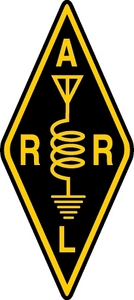 At the same time, individual amateurs and clubs have reported that local media representatives have contacted them to request information about Amateur Radio involvement in Puerto Rico. This likely will increase as word spreads in the national media about our activities.
At the same time, individual amateurs and clubs have reported that local media representatives have contacted them to request information about Amateur Radio involvement in Puerto Rico. This likely will increase as word spreads in the national media about our activities.

.jpg)
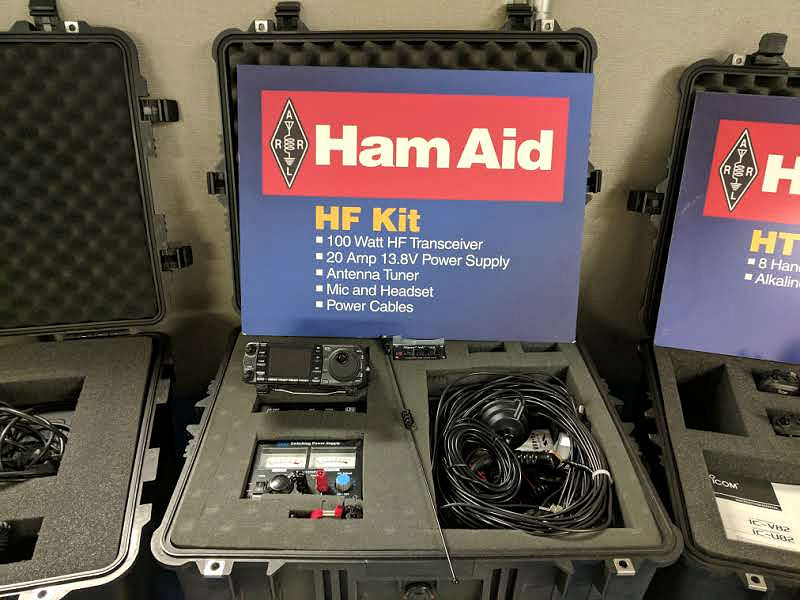 ARRL's Ham Aid program loans Amateur Radio equipment kits to established Amateur Radio Emergency Service (ARES®) groups and partner agencies during disaster responses, in order to establish Amateur Radio communication support. Ham Aid is supported by donations from individuals and corporations, including many of our ham radio industry partners.
ARRL's Ham Aid program loans Amateur Radio equipment kits to established Amateur Radio Emergency Service (ARES®) groups and partner agencies during disaster responses, in order to establish Amateur Radio communication support. Ham Aid is supported by donations from individuals and corporations, including many of our ham radio industry partners.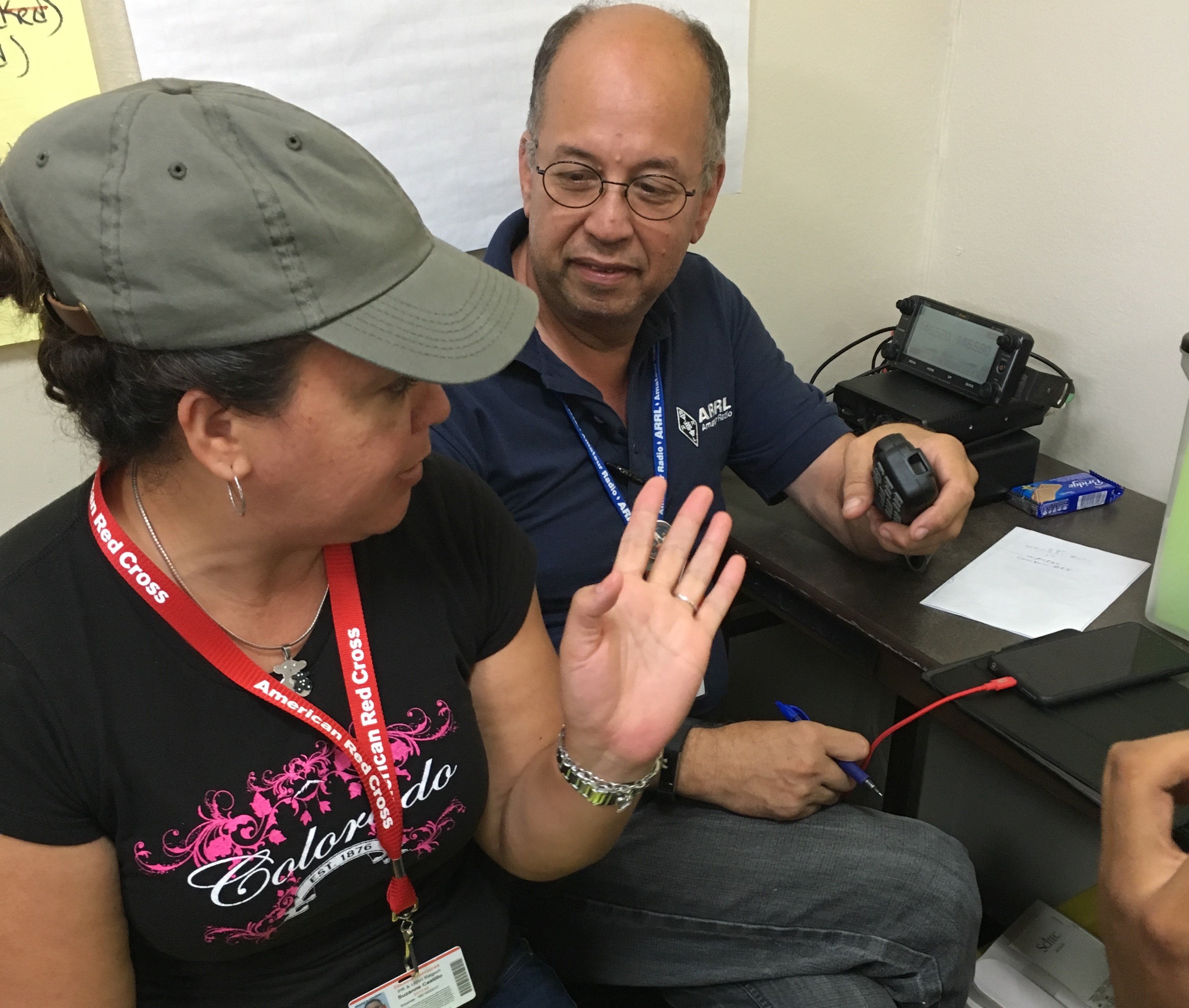

.jpg)
.JPG)
.jpg)
.jpg)
 Every 2 weeks, your host, QST Editor-in-Chief Steve Ford, WB8IMY, and the Doctor himself, Joel Hallas, W1ZR, will discuss a broad range of technical topics. You can also e-mail your questions to
Every 2 weeks, your host, QST Editor-in-Chief Steve Ford, WB8IMY, and the Doctor himself, Joel Hallas, W1ZR, will discuss a broad range of technical topics. You can also e-mail your questions to .jpg) "Our help is needed, but new information came in last night," Lloyd said in a September 25 Facebook post. "We established contact with the emergency operations center (EOC) on Dominica late last night. We now know that the port is open again, and other relief materials are starting to flow into Dominica."
"Our help is needed, but new information came in last night," Lloyd said in a September 25 Facebook post. "We established contact with the emergency operations center (EOC) on Dominica late last night. We now know that the port is open again, and other relief materials are starting to flow into Dominica."
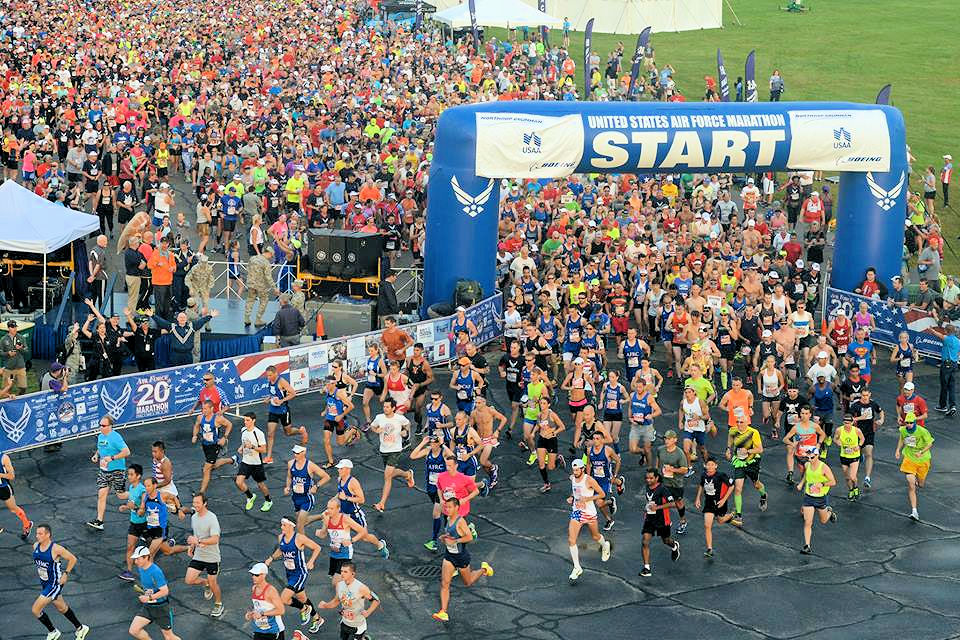 USAF Marathon Race Director Robert Aguiar said race officials consider the Amateur Radio volunteers a vital resource and have come rely on their professionalism and communication skills. He said it would be extremely difficult, if not impossible, to have the race without Amateur Radio-provided emergency, logistic, and medical communications among the race director, his staff, the Wright-Patterson Air Force Base (WPAFB) incident commander, and the hydration and medical stations.
USAF Marathon Race Director Robert Aguiar said race officials consider the Amateur Radio volunteers a vital resource and have come rely on their professionalism and communication skills. He said it would be extremely difficult, if not impossible, to have the race without Amateur Radio-provided emergency, logistic, and medical communications among the race director, his staff, the Wright-Patterson Air Force Base (WPAFB) incident commander, and the hydration and medical stations.
.jpg) First licensed in 1956 as KN6SXX, LaPorta joined the US Army after high school and then went to work for the Army as a civilian in 1968 in Texas. While in Texas, he served a president of the Dallas Amateur Radio Club (1970-1972) and was a member of the Richardson Wireless Klub. He also presented ham radio classes, and one of his students was Jim Haynie, W5JBP (SK), who later served as ARRL President.
First licensed in 1956 as KN6SXX, LaPorta joined the US Army after high school and then went to work for the Army as a civilian in 1968 in Texas. While in Texas, he served a president of the Dallas Amateur Radio Club (1970-1972) and was a member of the Richardson Wireless Klub. He also presented ham radio classes, and one of his students was Jim Haynie, W5JBP (SK), who later served as ARRL President.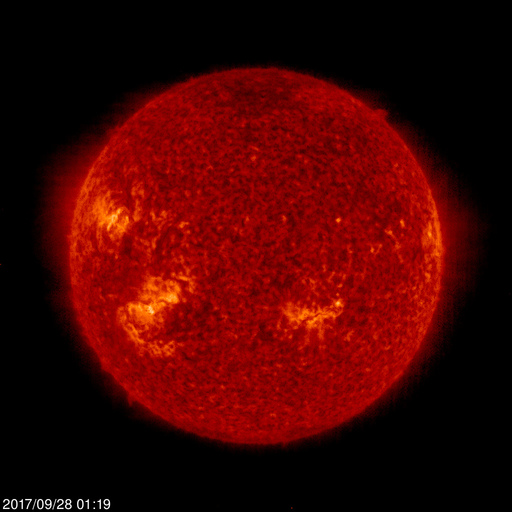 Predicted solar flux is 91 on September 28-October 1; 88 on October 2-4; 90, 95, 90, 85, 76, 75, 74, and 73 on October 5-12; 72 on October 12-15; 71, 74, 73, 78, 80, 87; and 90 on October 16-22; 95 on October 23-November 2; 90, 85, 76, 75, 74, and 73 on November 3-8, and 72 on November 9-11.
Predicted solar flux is 91 on September 28-October 1; 88 on October 2-4; 90, 95, 90, 85, 76, 75, 74, and 73 on October 5-12; 72 on October 12-15; 71, 74, 73, 78, 80, 87; and 90 on October 16-22; 95 on October 23-November 2; 90, 85, 76, 75, 74, and 73 on November 3-8, and 72 on November 9-11.







